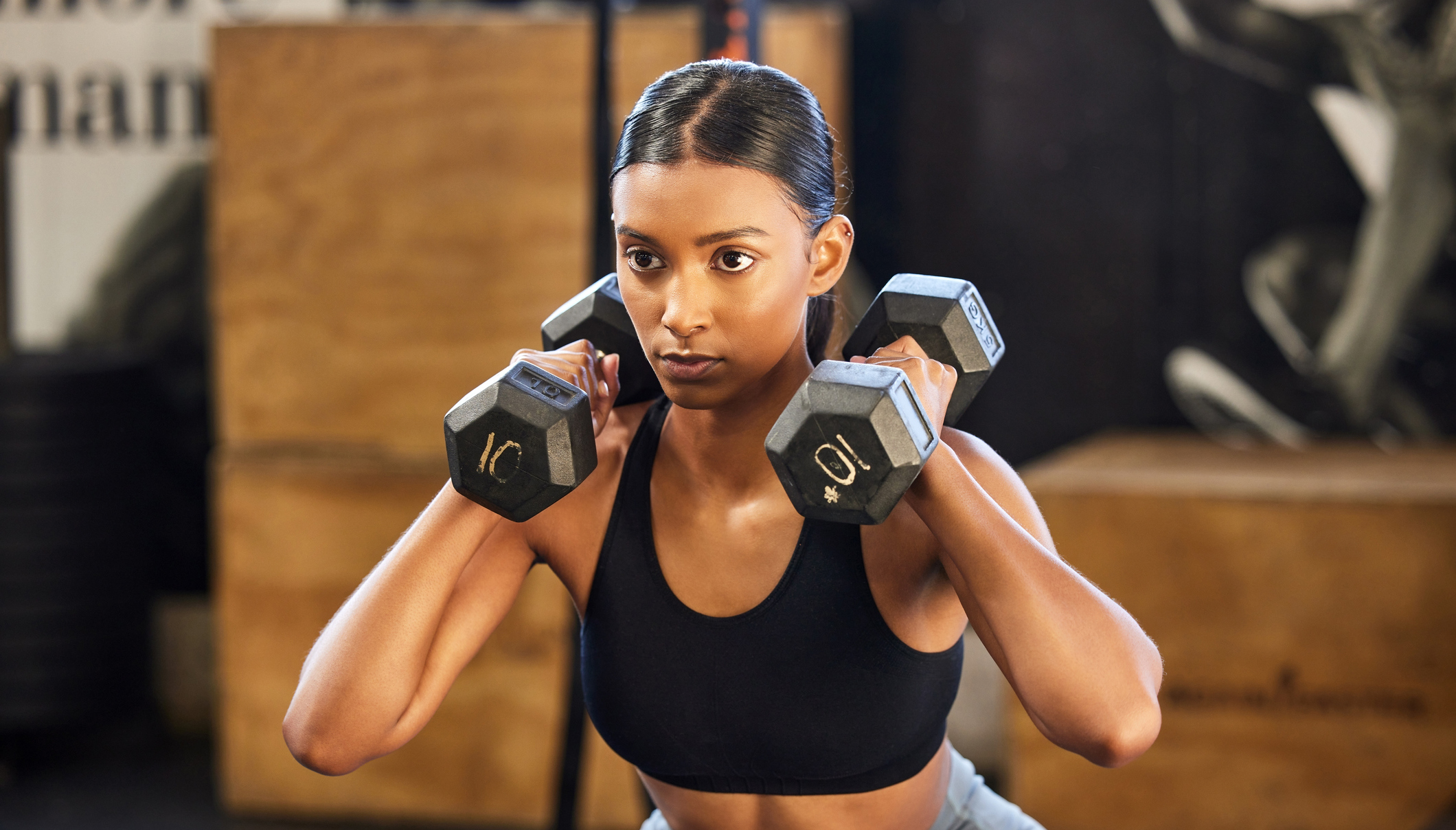
Strength training is one of the best things you can do to keep your body healthy, strong and mobile. If you spend a lot of time sitting down, strength workouts can support healthy muscles and joints, and help keep aches and pains away.
But even though we all know that this type of exercise is good for us, it can be difficult to find the time for it.
Whether you’re a regular gym-goer or not, your workouts should effectively target a wide range of muscles. So what exercises are really worth doing?
According to personal trainer and founder of fitness program Victress MVMT Stacy Osborn, there's one movement that you could incorporate into your workouts to develop full-body strength.
"The thruster is a great full-body movement for building strength and boosting your metabolic health," says Osborn.
If you've never done it before, the thruster is an exercise that involves squatting then pressing a weight overhead as you stand up. It's often used in CrossFit workouts, but you can scale it to your level and do it at home if you own weights.
How to do a thruster
Video: Zdyma4 / Creatas Video+ / Getty Images Plus
You can do a thruster using dumbbells, kettlebells or a barbell. You can also do it without equipment while you're getting used to it, or Osborn suggests even starting with soup cans.
Here, we describe how to do it with dumbbells.
- Hold dumbbells by your shoulders with your elbows pointing forward. Stand with your feet slightly wider than shoulder-width apart with your feet turned out.
- Keeping your elbows high, push your hips back and bend your knees to squat down until your hips are level with, or below, your knees.
- Push through your heels to stand back up explosively, using the momentum from your leg drive to extend your arms straight up, lifting the dumbbells overhead.
- Lower the dumbbells back to your shoulders and immediately transition into the next rep.
The thruster is a full-body movement: "It's not just a squat and then a press," says Osborn. "We're using the drive of the hips to push the weight overhead."
Think about pushing through your legs throughout to make the movement as smooth as possible, rather than stopping and starting.
It's also important to think about your form at the top position. "Once you've reached that full extension with your arms overhead, your arms should be even with your ears," says Osborn. "Don't hyperextend or arch your lower back when you reach that top position. Keep your ribcage and pelvis stacked."
The benefits of thrusters
The thruster recruits muscles in both the lower and upper body and it requires a lot of core engagement to stabilize your torso and back while you push the weight overhead, so you'll be developing strength all over by practicing this move.
It's also ideal for mobility. "You get that full range of motion and movement," says Osborn.
You can tailor the way you do this exercise depending on your goals. For example, if your focus is getting fitter and improving your metabolic health, opt for a lighter weight and more reps (around 12-20) a set.
But if your focus is on building strength, you can challenge yourself with slightly heavier weights for a lower rep range (around 8-12) a set.







